KS3 and KS4 3D Shapes Worksheets
Nets
Year groups: 7, 8
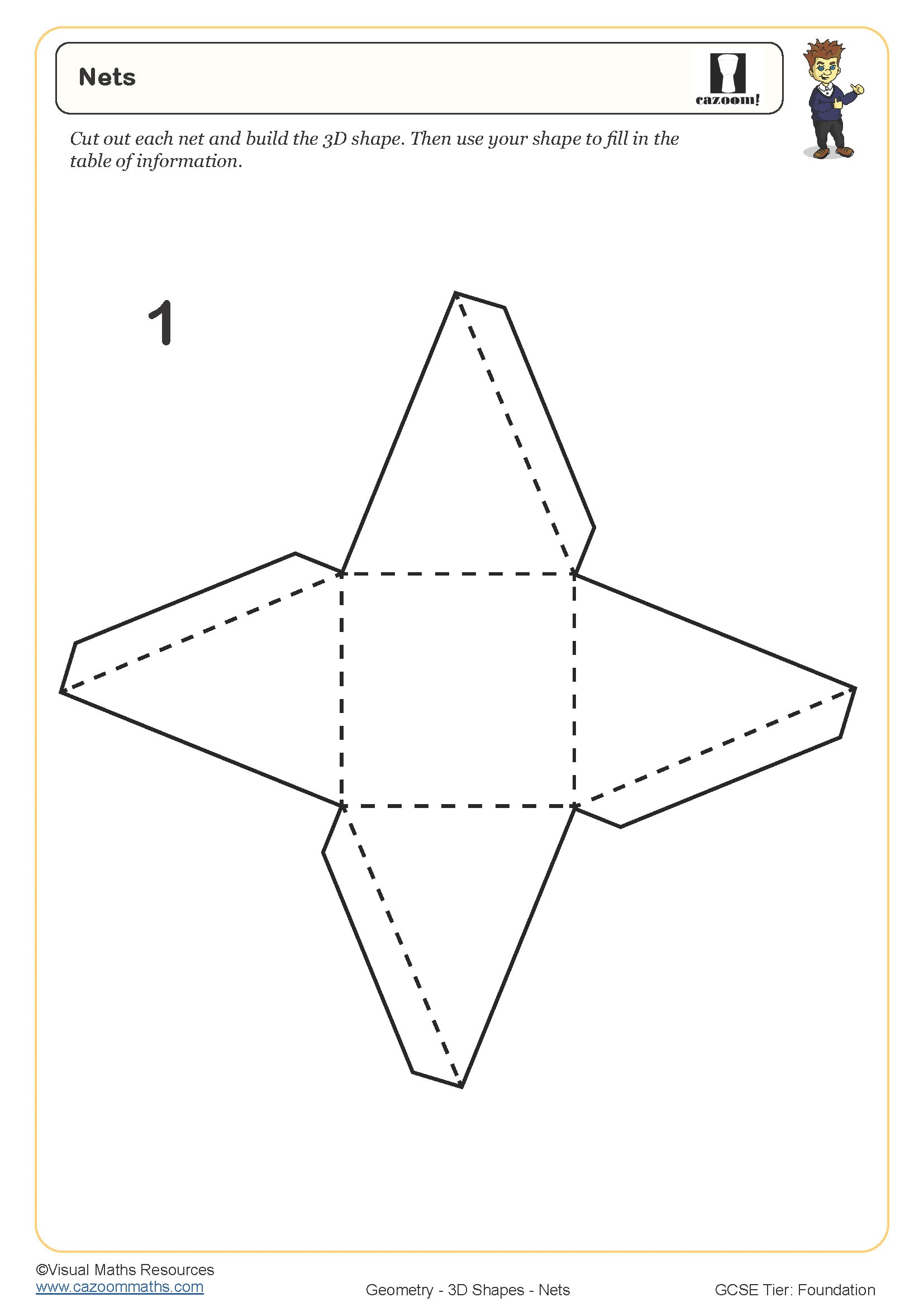
Nets of a Cube
Year groups: 7, 8
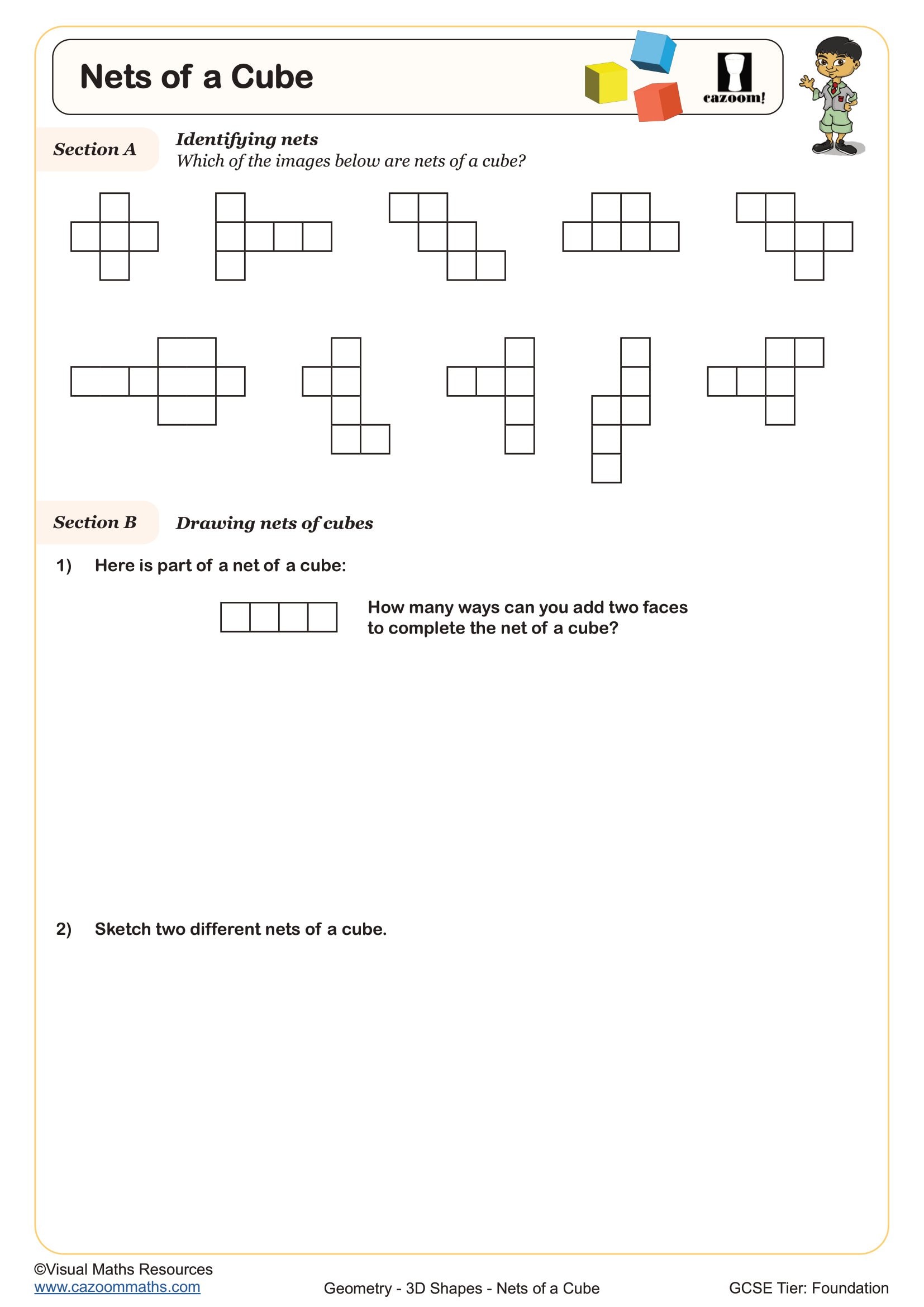
Nets of Cuboids
Year groups: 7, 8
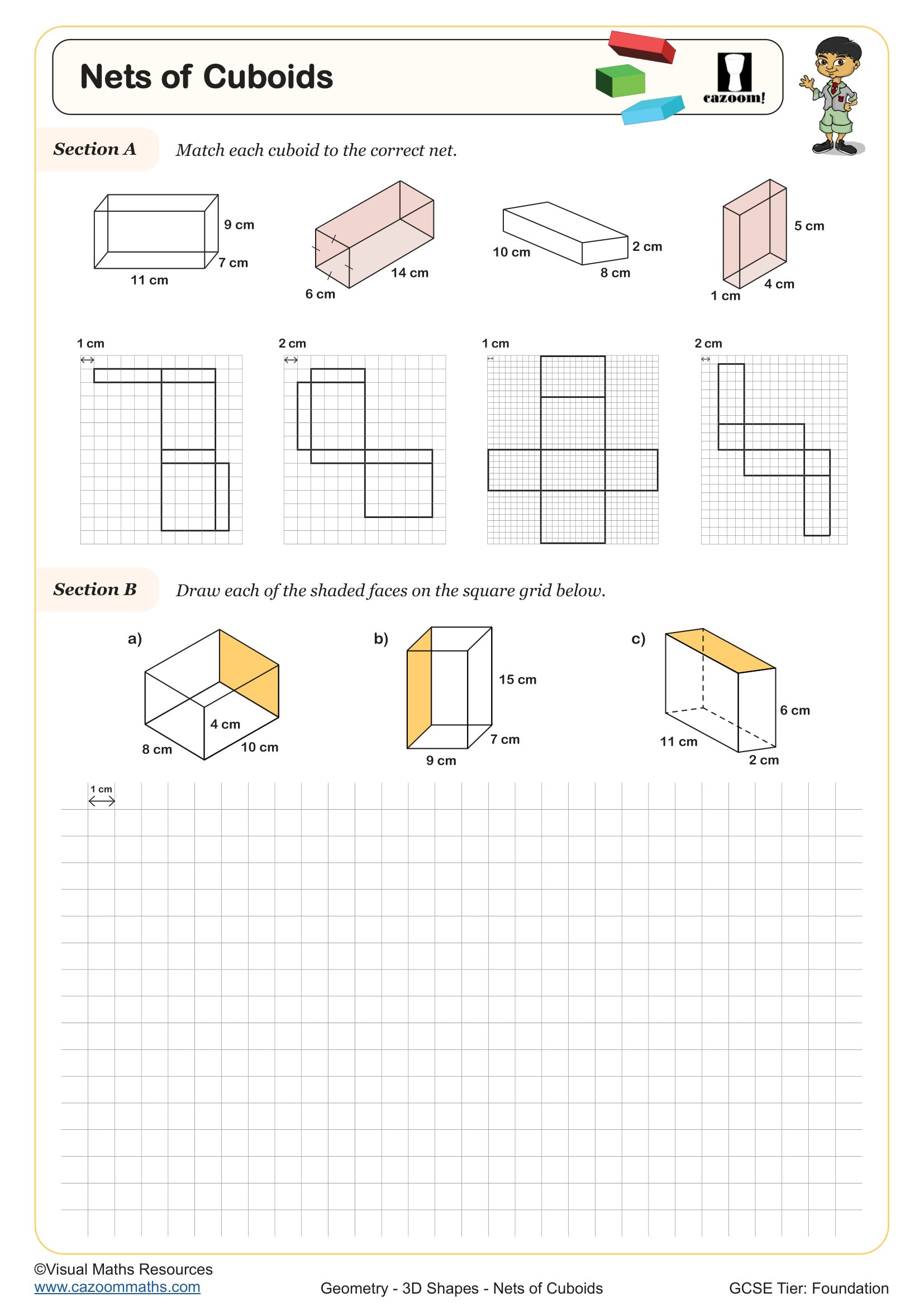
Properties of 3D Shapes
Year groups: 7, 8
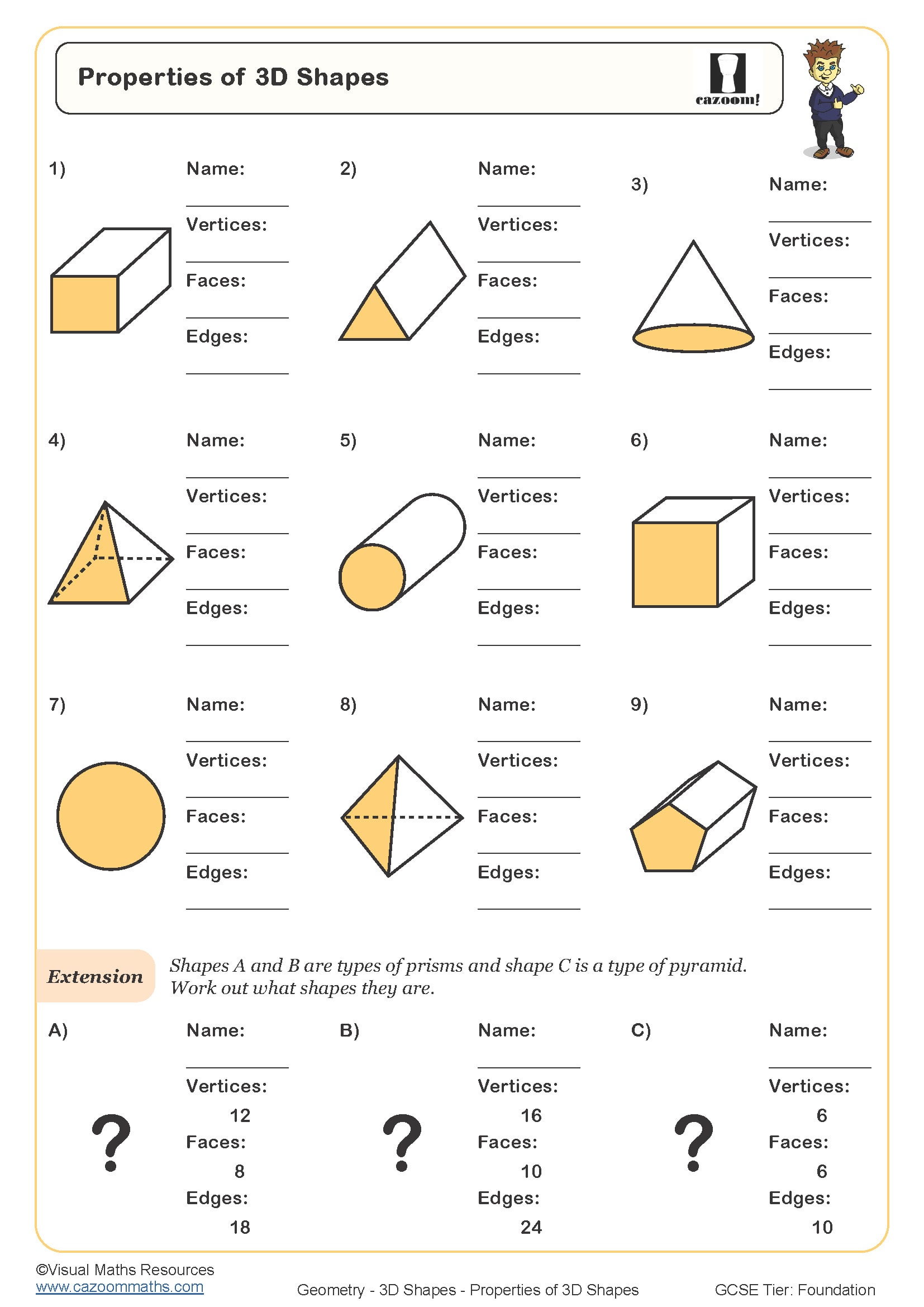
Cross Sections
Year groups: 8, 9
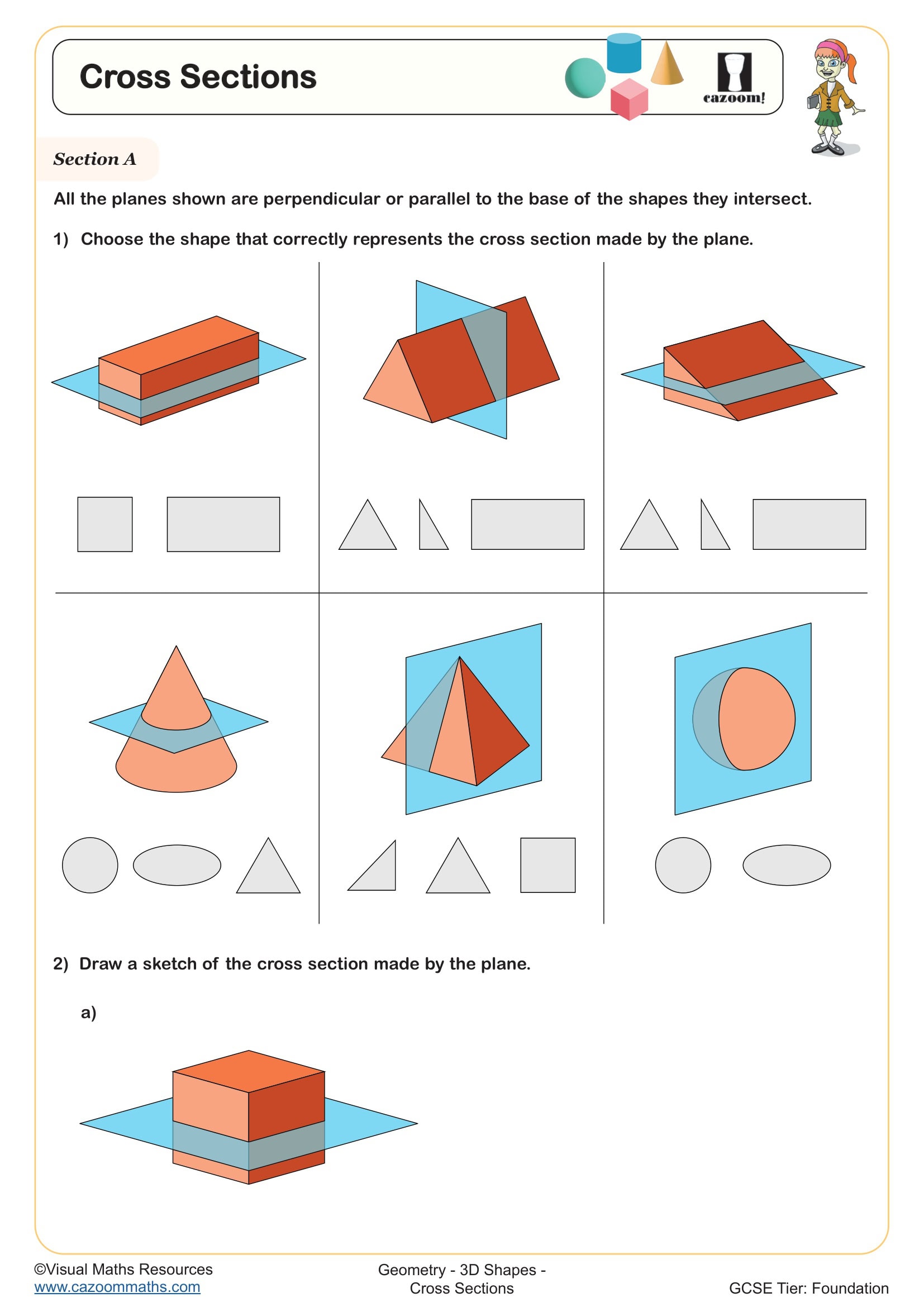
Plans and Elevations (A)
Year groups: 8, 9
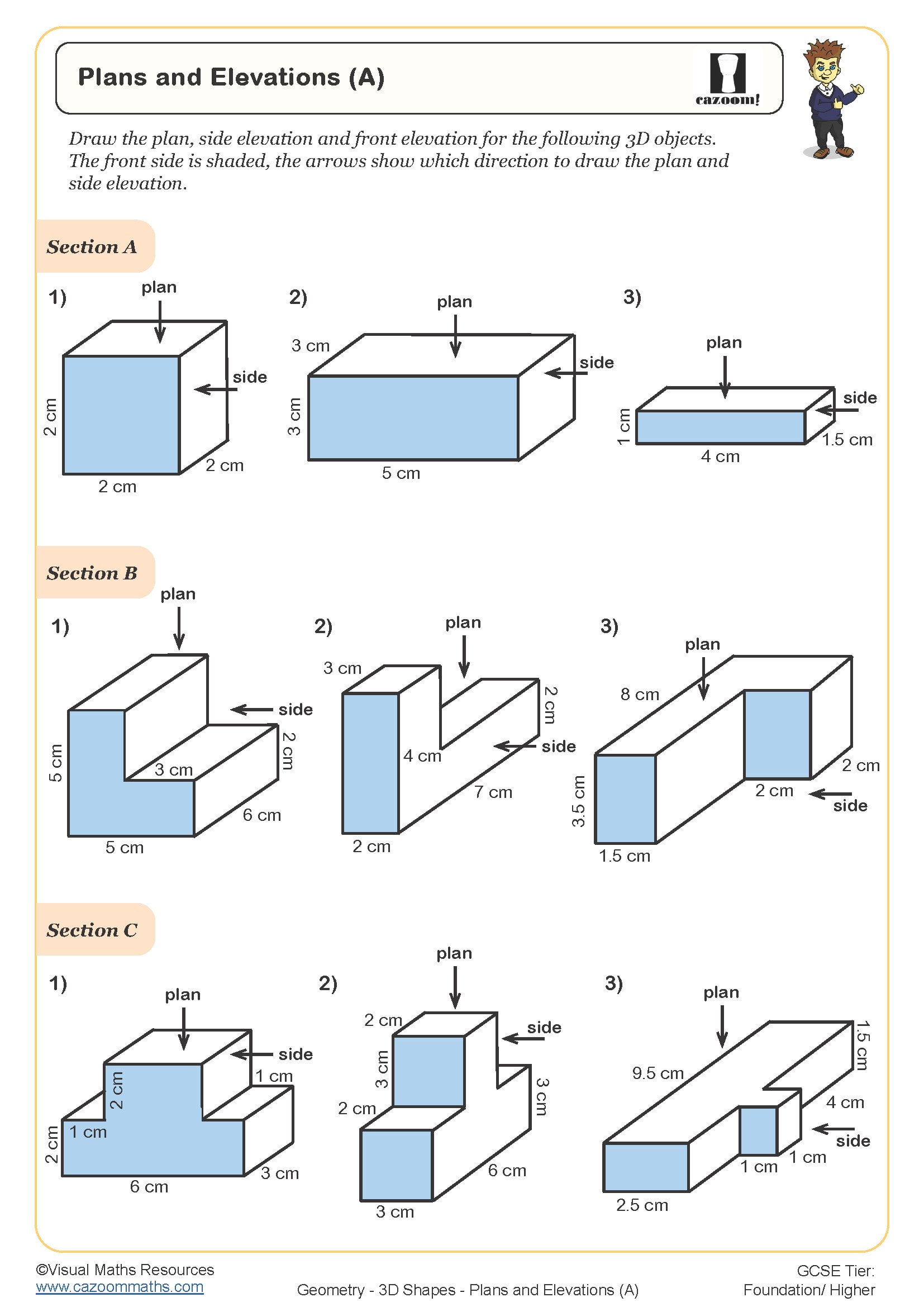
Plans and Elevations (B)
Year groups: 8, 9
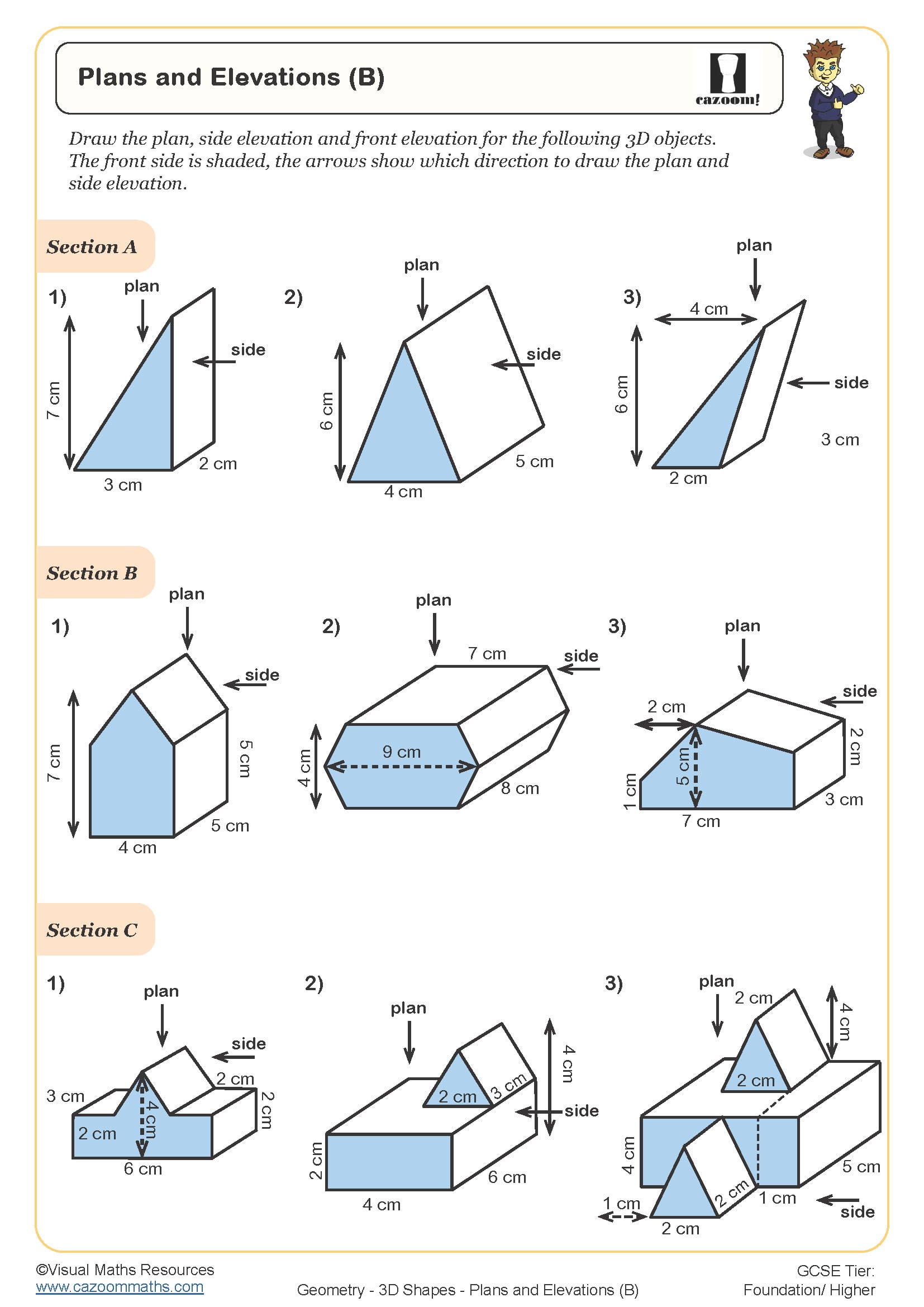
Plans and Elevations (C)
Year groups: 8, 9
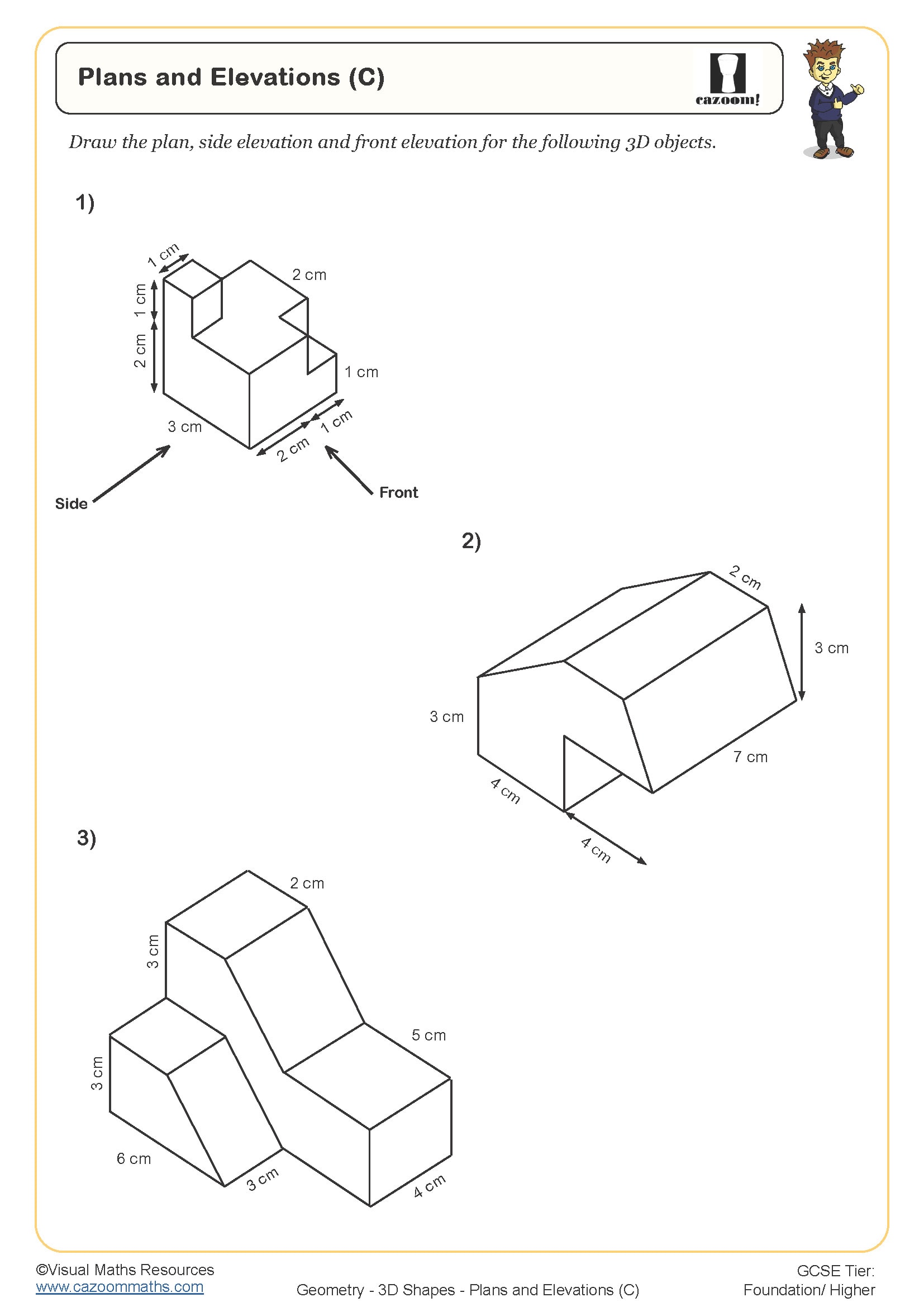
Recognising Prisms
Year groups: 9, 10
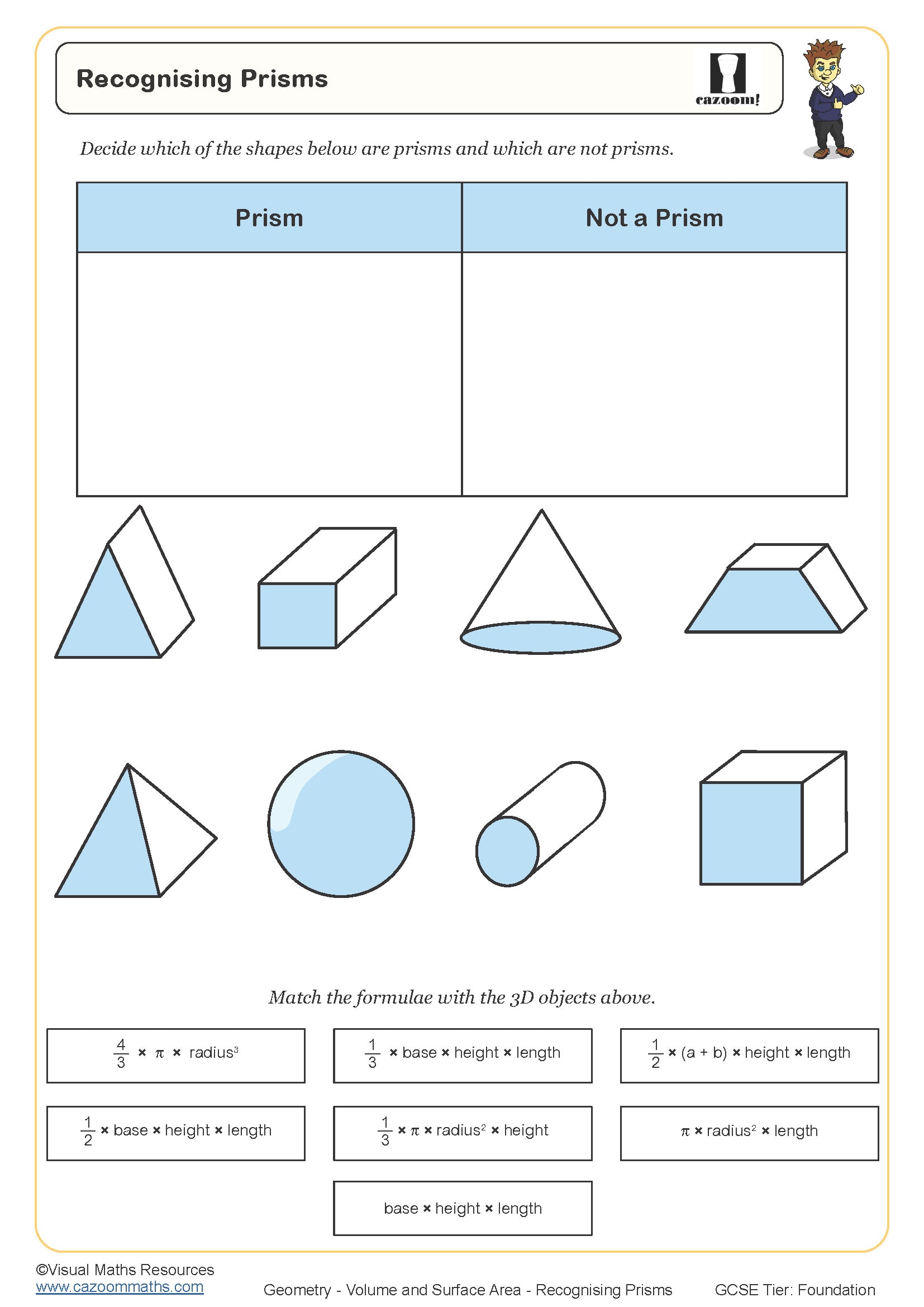
Plan and Elevations - Using Cubes (A)
Year groups: 10
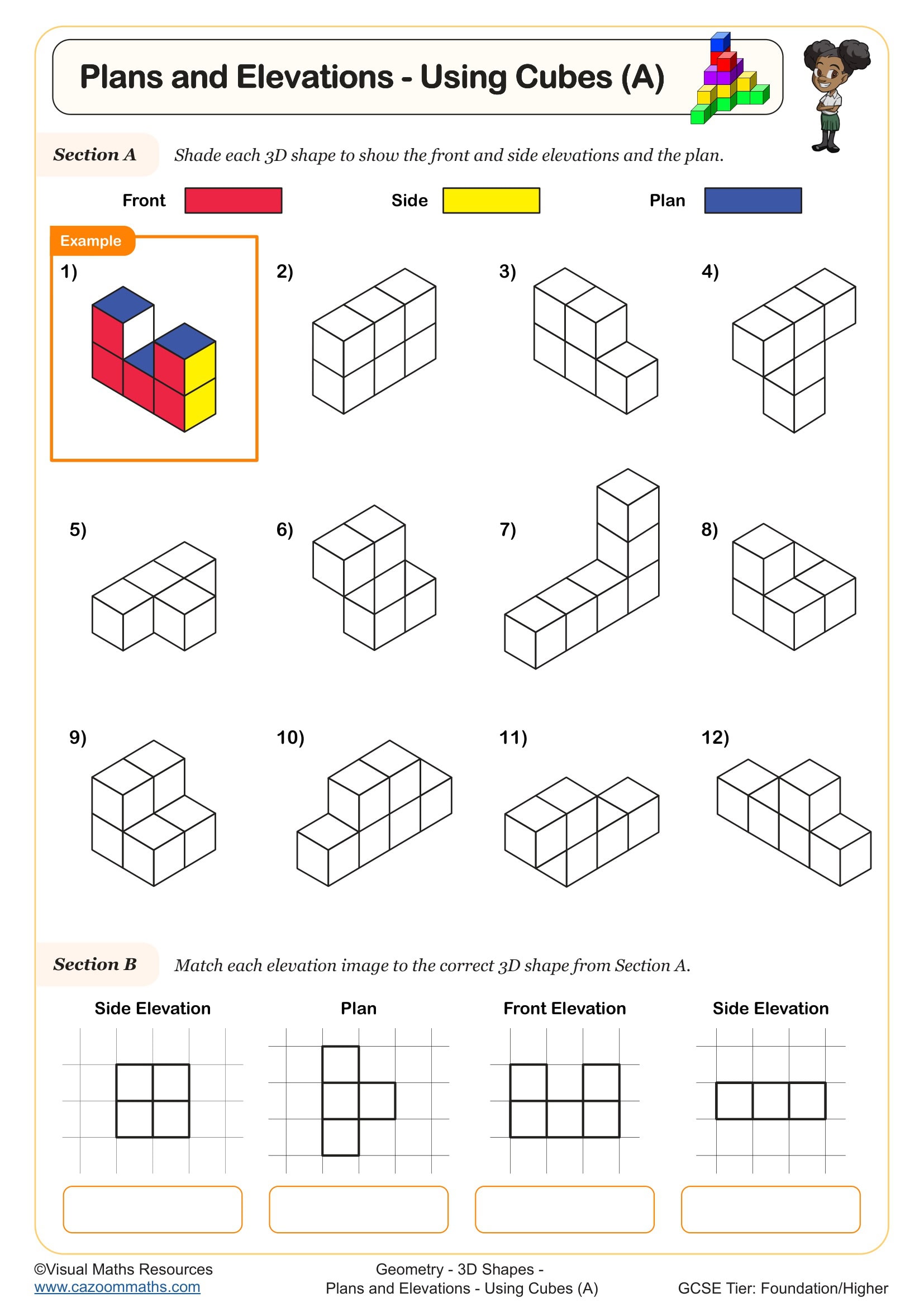
Plan and Elevations - Using Cubes (B)
Year groups: 10
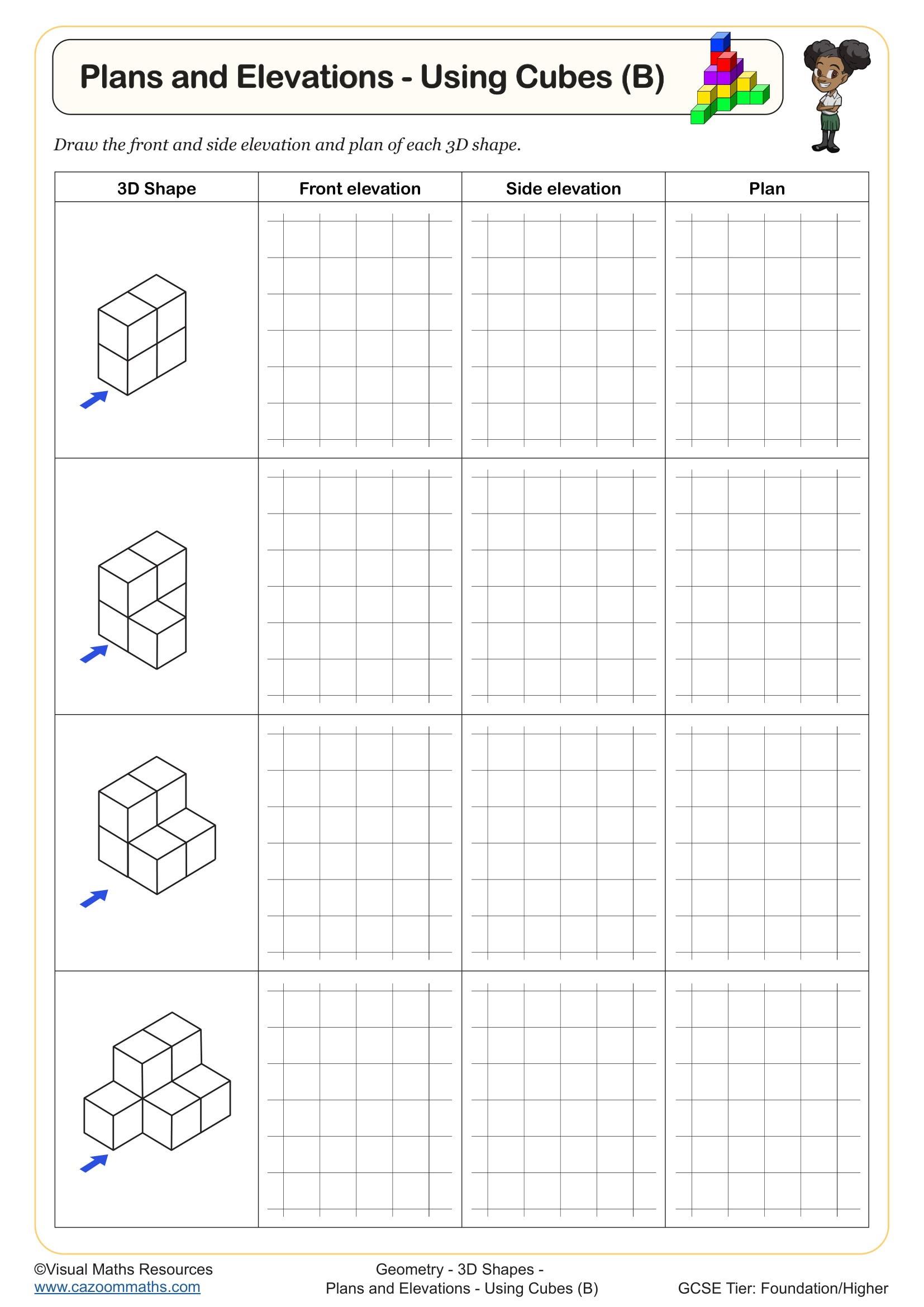
Plan and Elevations - Using Cubes (C)
Year groups: 10
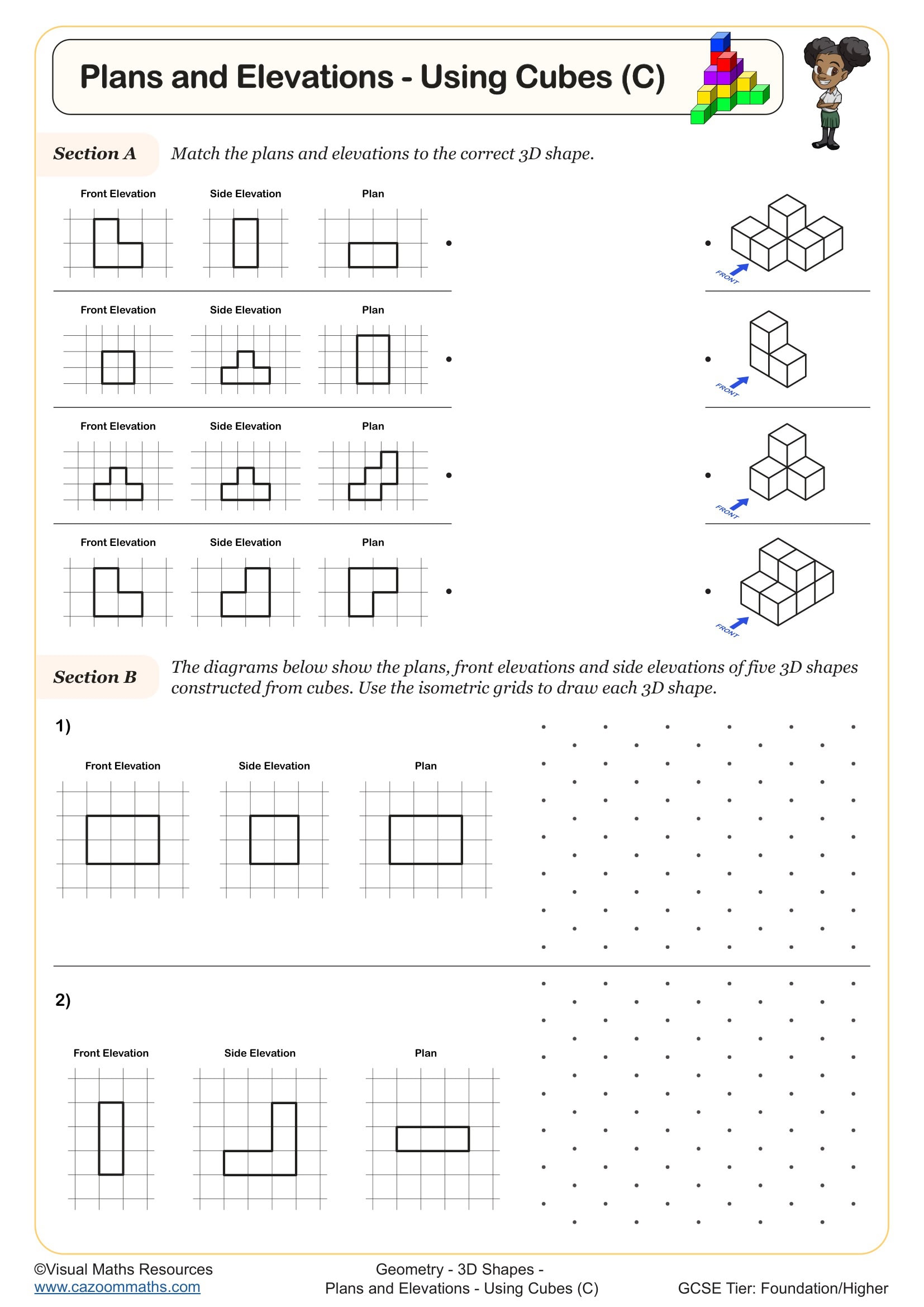
PRINTABLE PDF KS3 3D Shapes WORKSHEETS WITH ANSWERS
If you are hoping to help your students excel at KS3 Geometric shapes, our collection of 3D shape worksheets are perfect for use in any teaching setting. With answers included and available in an easy-to-download PDF format, these geometry worksheets include lots of practice questions that make understanding complex geometry topics both fun and straightforward.
What are 3D Shapes?
The 3D shape is a solid shape. It is distinct from flat 2D figures and has length, width, and height. Key examples include:
• Sphere: Sphere is ball-like solid shape, uniformly round without edges. Just like a football or a tennis ball!
• Cone: Cone is like an Ice cream cone-shaped, with a pointed tip and flat base.
• Cuboid: A Cuboid is a box-shaped, six rectangular face, just like a cereal box.
• Triangular Prism: Triangular Prisms are tent-like, with two triangular ends and three rectangular sides.
• Square-based Pyramid: Square-based Pyramids are like the Egyptian pyramids, with square bases with four converging triangular sides.
• Cube: Cubes are dice-like, with six equal square faces.
• Tetrahedron: Tetrahedron has four equilateral triangular faces, resembling a three-sided pyramid.
• Cylinder: A cylinder is can or drum-like, with two parallel circular faces connected by a curved surface.
Understanding The Concept Of 3D Shapes
3D shapes are objects that exist in the space around us, having length, breadth, and height, unlike 2D shapes which are flat and only have two dimensions. Think of a 3D shape as something you can pick up and hold, like a ball or a box, objects that occupy space in the real world.
Use of 3D Shapes in Real Life
The 3D shape, just like another solid shape, is all around us and part of our daily life. Cones are like traffic or ice cream cones, spheres are like balls, and boxes are usually cuboids. Tents often look like triangular prisms, and pyramids and kids’ blocks are like cubes. Cans are shaped like cylinders. Knowing these shapes helps us understand the world better as well as solve complex geometry riddles in real life.